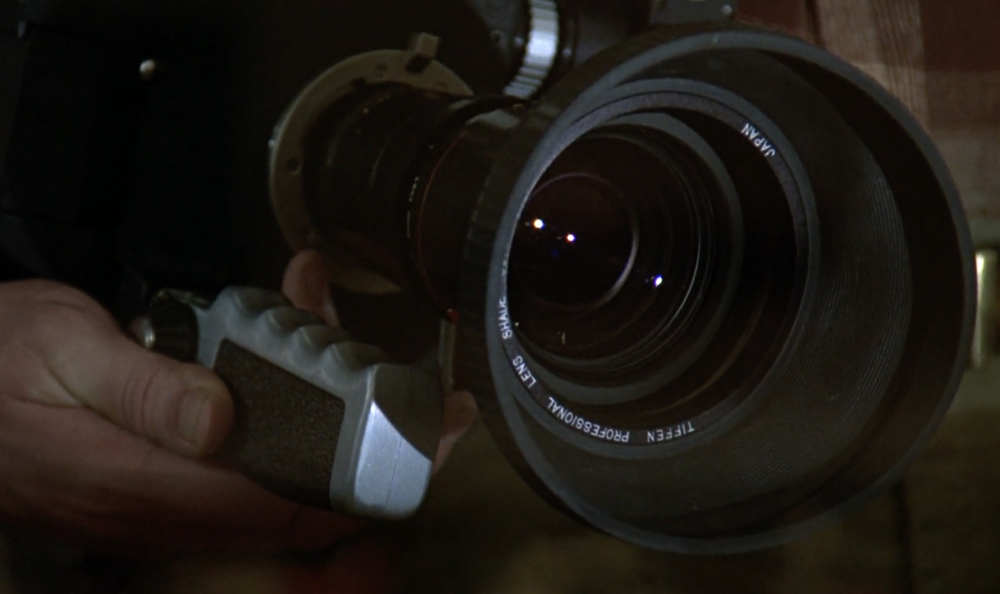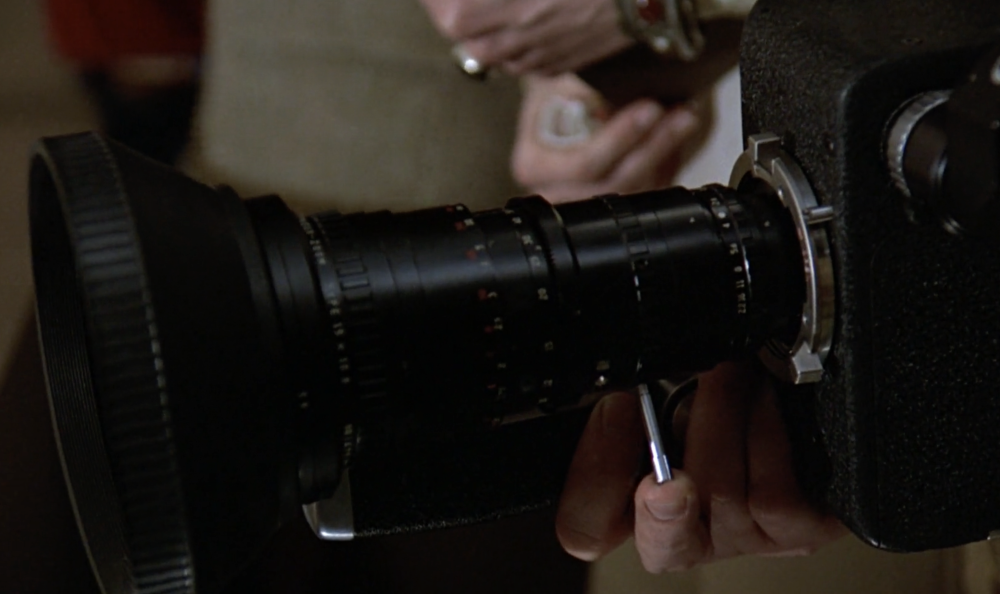Leaderboard
Popular Content
Showing content with the highest reputation since 04/26/2024 in Posts
-

Inferior ? Shooter
MrSMW and 5 others reacted to fuzzynormal for a topic
Disclaimer: I'm an old. Also, this rant is completely contextual to two concurrent projects I'm doing. I'm gonna blow some steam here. So, been making a no-budget passion project documentary with my wife and have found myself grabbing my (2017) EM10iii more than half the time to capture our 24p footage. We have a FUJI XT5 --as well as our (also long in the tooth) GH5 that specs wise does a lot better, but here we are running around with a device that is technically inferior. The issue is that it's not technically inferior by much when you get right down to it. For what we're doing, the divide between 8bit video and 10bit video isn't such a big deal. We're on manual lenses, and, honestly, the image from the EM10iii+our lenses is dang good. Paid $300 for this camera. Seems hard to imagine a cheap cam would be what's used over more advanced gear, but we are certainly doing so. Funny thing is, I can't rely on the XT5 (and it's admittedly gorgeous colors) because it overheats(!), and while I like the GH5 results, I don't like using the camera as much as I like handling the Oly. Perhaps it's a mix of things. Size, ergos, what we DON'T need from the feature set, knowing what'll ultimately work for our particular production, and a weird little feature of the Oly has (2x punch in) that the GH5 does not. Anyone else holding onto (and often using) old inferior gear because it's good enough and not really chasing new tech anymore? I'll testify without irony that we've achieved better footage with this little camera than another million dollar + doc film I'm working on which used an ARRI. Why? Because subjects in a doc don't really give a shit when it's a single unassuming shmo running around with a small modest camera like the EM10. People DO give a shit when they're in front of a giant rigged out ARRI and a crew of 9 self-important shmos flitting around with their serious demeanors and a gaggle of mobile video-village gear in tow. And people in a doc behave correspondingly: Not naturally. They're performative. I'm left editing a bunch of dry useless footage from the ARRI shoot. Additionally not much actual quantity of footage because they were so damn immobile. Lame. That's a hill I'll die on regarding doc film making. When filmmakers put their gear fetish above good content acquisition. Sometimes that requires big sophisticated gear, sometimes not. Gotta be honest with yourself about that. Anyway... Finally, the doc we're working on will be mastered in 1080. If anyone can successfully convince me that's not good enough for a doc screener, I'll entertain the argument, but 1080 24p is fine to my eyes. /rant.6 points -
Best bang for buck lighting
eatstoomuchjam and 2 others reacted to KnightsFan for a topic
My rule of thumb is that if I use an item on 5 or more shoots, buying (and reselling at the end) is cheaper than renting. That's probably fairly conservative too: I usually buy used, so when I sell I get 60-80% of the cost back. I've even sold cameras at a profit after 1-2 years.3 points -

Best bang for buck lighting
gethin and 2 others reacted to Tim Sewell for a topic
Sorry. UK idiom. 'Old' in that context doesn't mean old. My bad.3 points -
The majority of YT that I watch has nothing to do with cameras, and in general the people that have the most followers have the least fancy camera equipment. I mean, there are probably more channels that have over 500K subscribers and are just shot with a smartphone than all the active camera YT channels combined.3 points
-
Documentarian/Filmaker Worth Following
ac6000cw and 2 others reacted to eatstoomuchjam for a topic
One of the things I find hilarious about YouTube is that a lot of the big camera influencers talk about leveling up channels and increasing production value, etc. A lot of the bigger names have between 50-200k subscribers and a lot of them had the advantage of being early to starting camera channels. Newer, theoretically popular people like Cam Mackey have like 65k. Meanwhile, a friend of mine decided to do something with his YouTube channel a couple of years ago after the news did a story about his having purchased the monorail for $1/car from our local zoo when they stopped running it and turning it into a private campsite on some land in Wisconsin. He mostly repurposes junk that he finds at garage sales and thrift stores into things like push-pull carts on railroad tracks and satellite dishes coated in aluminum foil. The cameras he uses are mostly potatoes - like 25-year old camcorders and Hero 3-type stuff. He has a pretty decent natural grasp of editing and story, though, and he's a funny guy. He also would freely admit that he neither knows a lot about cameras nor cares to know any more. Last I checked, he was at about 187k subscribers (including me - I like watching his stuff). So if the goal is just to grow a YouTube channel, the quality of the camera is probably the least important bit. Making half of your video be slow motion slideshow garbage so that you can put "cinematic" in the title doesn't really get views if the rest of the content is garbage. I buy too much gear for my own mediocre talent, but that's partly just because I want it and after a lot of years, I can almost always find something to trade in to make stuff more affordable. I have no illusions that buying a Komodo-X will substantially improve anything I do, but I might do it anyway. If I get it, I'll probably like it a lot for a while and then after a couple of years, I'll probably trade it in toward something else. Anyway, another thing to remember with these YouTubers that are in the business of making day 1 review commercials for various channels - when they're showing "what this camera can do," go watch their older stuff with a camera from last year. Most of the time, it looks almost exactly like whatever they're doing with the new camera because they're really not that different. One of the most laughable things that people say on various camera forums or YT comments is "I can't wait for (creator name here) to get it so we can see what that camera can really do." Wanna know what that camera will look at when your favorite creator gets it? Go watch the review they did of the camera before it. It'll look pretty much like that.3 points -
After posting the previous post I went back and compared the looks a few times and realised I was a bit harsh on the ARRI LUT, considering that it was very flattering on my battered skin tone but basically didn't screw up the strong colours too much, whereas the film look is much stronger without being that much more flattering. Inspired by the ARRI LUT, I created this custom grade from scratch. SOOC (for reference): New Custom Look: ARRI LUT (for reference): I'm actually really happy with that look - I went a bit further in evening out the skin tones and brightening them up a bit and it didn't seem to come at the expense of anything else. I think I could easily build a look around this, and will experiment further.3 points
-
Hollywood shoots ProRes for the most part, except for VFX plates.3 points
-
CP16. Cinema Products brand…who were also making this new gadget called a Steadicam that’s about to be 50 years old. It was a common news film camera. They also had mag film where the sound was recorded directly onto a mag stripe on the film itself. It wasn’t as good as the open reel recorder of course. I used one on my first short movie. It feels very cheap and lightweight but it was a staple.3 points
-

Panasonic S5 II (What does Panasonic have up their sleeve?)
John Matthews and one other reacted to Parker for a topic
@John Matthews While I'm sure you could just put a bit of gaff tape over the contacts and manually program in the focal length you want for IBIS have the camera treat it like a manual lens and get the high stabilization mode, it probably wouldn't be ideal because then you'd also lose aperture control, AF, and most likely the ability to even focus, as I'm assuming it's an electronic/focus-by-wire lens and would need the contacts active to be able to function.2 points -
I used the new high e-stab on my s5iix on a shoot last week to test it out, pretty dang smooth! Although the crop is quite significant, I was running around getting very gimbal-like footage on the venerable sigma 18-35, but at 18mm, plus the crop in 60p, still quite tight, so I may use this more with the Sigma 14-24. Great new tool in the toolbox of this already amazing camera though.2 points
-
Maybe the forum has been taken over by AI and it's become sentient and agreed with your comments so much it wanted everyone to read them several times!!2 points
-
Upcoming Insta360 X4 8K, in less than one hour, here?
eatstoomuchjam and one other reacted to ac6000cw for a topic
The situation with review content being affected by commercial interests is nothing new in the slightest... Many years ago I was asked if I was interested in doing a product review for a now long-gone print magazine. I tried to be as fair as possible when I wrote it, but thought the product had some usability/compatibility issues that needing fixing. The version of the review printed in the magazine had some of my criticism watered-down, I assume partly because advertising revenue related to the product was important to the finances of the magazine. I only did a couple of reviews for the magazine in the end, mostly because the amount they paid for them wasn't much in relation the work involved in testing a product properly (and I wasn't interested in doing quicker, more superficial reviews).2 points -
Bigger, heavier duty fixtures are probably outside the budget you're willing to spend, but I'll just offer the devil's advocate view to the other posters here, that you can never, ever have too bright of a light. I generally use a Nanlux evoke 1200 as my keylight, usually shooting through a 4x4 frame of magic cloth, and I am frequently at 100% power and needing more output, sometimes ganging it with an additional 1200B, 600D, Prolycht 675, whatever I have available. Granted, I am usually trying to hold some exposure through windows and the like, and I prefer to light with big, soft, beautiful keys, but still. You'll never regret having more power at your disposal. That will just allow you to bounce more, diffuse more, shoot through more material... always an advantage! Also worth mentioning, but bigger fixtures are more portable than you might think; until I recently upgraded to a full-size production van, for the past several years I've been able to easily carry a 1200d, Prolycht 675, 4' pavo tubes, in addition to a Nanlite forza 500, aputure 300d, spotlight attachment, 4 or 5 turtle-base c-stands, 4x4 frames and diffusion, various softboxes, not to mention all the accompanying bits and bobs of grip, power, dolly and of course, cameras, lenses, etc.... all within the confines of my beloved '09 Honda Civic. Now that I am finally in a bigger vehicle, I've got the Nanlux 2400b on my soon-to-purchase list as well. And I'm sure I'll very frequently still want more power.2 points
-

Best bang for buck lighting
kye and one other reacted to Tim Sewell for a topic
Well I'm no pro, but I do want to get pro results. The tiles were, happily, a fairly neutral dark grey, but the room itself was tiny. You literally could not swing a cat in there. I lit it quite easily - 1 x 5800K Lupo into a bounce on the wall opposite the talent, a 3200K Lupo offside and behind, a 3200K tube on the floor at his feet and then the M20 at 6300K behind him lighting the sloping roof at around 40% to give a bit of separation. It certainly looked nice enough in the monitor! Today's shots (which only took just over an hour - the advantage of the tiny location was that you can only do so many CUs and mids of a guy sitting on a stool playing a guitar and staring at a laptop!)n will be used as B-roll to run as interview cutaways and also to create a monitor LUT for all the other studio work we'll be doing over the next couple of months.2 points -

Documentarian/Filmaker Worth Following
kye and one other reacted to Tim Sewell for a topic
Have you checked out the Shotdeck channel? There aren' a huge number of videos there yet, but those that are seem very good. Basically hour-long Lawrence Sher interviews with directors/DPs etc about their movies, using the images from the site as jumping off points.2 points -
Documentarian/Filmaker Worth Following
ac6000cw and one other reacted to Ilkka Nissila for a topic
Of course this is true; but the main business in photography, as far as the consumer market (and businesses that target it) is concerned, is selling gear and not the art or teaching techniques for making that art. The attitude in online forum discussions is that everything should be easy and automatic, and people are willing to pay significant money towards that end, but many people are not willing to accept that there is a skill component to photography. If skill is required to get results, the camera is considered flawed. People spend more time online complaining about (perceived) camera flaws and performance comparisons than learning the skills that they would need to do meaningful work. And the youtubers who talk about gear target this population who has been mislead to believe that if they shop for the next great thing, then they will become great artists. They get paid to promote gear, and have been misnamed "influencers" or so some such strange term when in reality it is what used to be called advertising. Somehow the social media "influencers" are supposedly more genuine and authentic than professional actors and models in advertising but this is really just an act.2 points -

Documentarian/Filmaker Worth Following
eatstoomuchjam and one other reacted to Tim Sewell for a topic
I like Luc, but it does seem that since he started really pushing his paid courses the channel seems to have shifted emphasis from practical stuff to more talking head stuff.2 points -

Best bang for buck lighting
eatstoomuchjam and one other reacted to Tim Sewell for a topic
I'm doing a b-roll shoot over lunch today for one of the documentaries I'm making this year (first shoot on this one, so looking forward to it!). I haven't been able to scout the room, which is a recording/rehearsal studio, but I do know that it's very small and that the walls are lined with those acoustic tile thingies. So I'm taking: 1 x tiny Ulanzi 40W bi-colour 2 x RGB wands 2 x Lupo 20W bi-colour Smartpanels 1 x Zhiyun M20 bi-colour 1 x FalconEyes RGB panel Also a bunch of pipe clamps, spring clamps, 1/4 20 magnet plates etc, plus 2 5-in-1 reflectors, one of them folded out to black. All battery powered. I probably won't use all of these, but I wanted to give myself some adaptability given that I'm going in near-blind. The look I'll be gunning for is classic split tone so I'll be setting up a daylight wash with the 40W light and using some of the other lights for warm accents. Camera set to 4300K. All of this fits in a single standard aluminium photographer's case from which I've stripped the foam, which is good because the camera weighs about 40 tonnes!2 points -
Saying "even the a6700 can look good" is sort-of like saying "even the cheapest Ferrari can go fast".. the a6700 is a very modern camera and high-spec camera. I can understand why you would say something like this though - you've been watching too much "camera YT" and have fallen prey to the two biggest hidden problems: Older cameras are invisible on YT, despite being the majority of what is used People that talk about cameras, or even mention them in the video or description so they're searchable, are using the most recent cameras, or relatively recent cameras. The reason for this is simple - if you shot a video with the Sony a4000 then you're obviously not into the "tech" so it's not something you're thinking about , and putting that in the description isn't going to benefit you because no-one is searching for a4000 anymore. However, the people making videos about anything else other than cameras might be using the a4000, the a3000 or their phone from 5 years ago. I recently discovered a woodworking / renovation channel I like shoots with a C100, which records 24Mbps 1080p but his YT uploads are in 4K and the image is basically flawless. It's over a decade old and you can get entire setups with lenses batteries etc for $500 or so if you snag a deal. The camera body is the most discussed film-making item, but is the least important Go watch almost any video that talks about camera equipment in a balanced way and they'll tell you that the camera body is less important than the lenses or tripods etc. Watch and video about film-making equipment in a balanced way and they'll tell you that the camera rig is less important than lighting or cinematography etc. Watch and video about technical film-making in a balanced way and they'll tell you that equipment is less important than location choice, production design, hair & makeup, etc.. Watch and video about creative film-making in a balanced way and they'll tell you that the technical stuff is important to get right, but is far less important than writing, casting, acting and directing, etc. So... the camera body is the least important item in the least important sub-category of the least important sub-category of film-making.2 points
-
Yeah, I assume that too. I've always been conscious of this too. The only potentially impartial reviews are when the person buys it anonymously like any member of the public would, gets it the same time it ships to everyone else, then they put it through their paces. The other issue with "reviews" that aren't long-term reviews is that the person hasn't had the product for long enough to really test it. People like Gerald might know what shortcomings to look for and actively go looking for them, but no-one can test reliability in less than a week. I find the same issues with product reviews on Amazon etc - they are essentially first-impression reviews.2 points
-
Best bang for buck lighting
gethin and one other reacted to eatstoomuchjam for a topic
There's a lot more to the question than just which lights to use. If you're indoors and feel like you're fighting the sun and if the windows will be mostly out of focus in the background, you can just put ND gel over them - it's fairly cheap and fast. If they'll be in focus, IMO ND gels look a little bit like shit so that might not be your best option. If you're outdoors and fighting the sun, especially for close-ups, a collapsible reflector or two (or three if you have one which can give some negative fill) is often a lot better than trying to compete with the sun with your light. You can get a pretty big reflector for about $30 from almost any photo store in the world. Otherwise, short of going with really big lights, if you're trying to blast a light through a window and have it compete with the sun, it's going to have to be a pretty big light. In those cases, I'd probably try to find a way to shoot the scene differently. 😄 These days my main kit consists of 1xAputure 600X, 1xAputure P300C, 1xAmaran 300C, 2xAmaran 150C - as well as the B7C lunchbox, MC4 mini-lunchbox, and a few scattered MX's. It's more than enough for almost anything that I shoot. I'll probably continue adding some stuff here and there when Aputure have huge sales (their Black Friday sale is legit - I got a huge discount on the 600X plus a couple of bonus things). If I need to go bigger than that, I'm more likely to rent it or to just hire a gaffer to roll up with a box truck full of stuff. For shooting on the go, I just also put together a kit with 3xStellaPro's with their Bowen mount - they're tiny and run off of USB-C so I can plug 'em into a V mount plate or even a battery bank. Only disadvantage? Above 30% or so, the fan runs constantly. I'm excited to actually do a shoot with 'em. I also picked up a Molus X100 for the cases where I want somebody to hand hold a light. It's alright, but the reflector in the Bowens mount seems to do some funky things with my softboxes.2 points -
Best bang for buck lighting
gethin and one other reacted to MurtlandPhoto for a topic
My big light is the Smallrig 450D. I love it. It's well-built and super bright when I need it. That said, most of the time the brightest lights I need are 300w.2 points -

Best bang for buck lighting
kye and one other reacted to Tim Sewell for a topic
I've seen quite a few 1200 and 2400 fixtures in use on various DP YT channels, but really only when the spaces that need to be lit are on the bigger side. And they're pretty big old units, needing heavier duty stands etc and in a lot of cases no longer having Bowens mounts. You're really getting into van territory so I'd expect these bigger LEDs to be much more of a hire item than something you'd carry around in your daily kit as an owner-op.2 points -
It's possible to synthesize all sorts of microphone types/polar patterns, including things like perfectly co-incident stereo pair mics (which are impossible to physically build), from a B-format Ambisonics stream/recording - https://en.wikipedia.org/wiki/Ambisonics#Virtual_microphones - and also produce a binaural stream - https://en.wikipedia.org/wiki/Ambisonics#Decoding I think that post-processing flexibility is the real strength of using a Soundfield microphone for ambient sound recording.2 points
-
I'm still lost down this rabbit hole, but these are an interesting reference. This is what happens if you put the GX85 through a "look". I put the GX85 test image through a bunch of output LUTs to see which (if any) I liked the flavour of. In order to compare them equally, I adjusted after the LUT to match the black and white points, exposure, and contrast. This way we're not just comparing the different contrast curves, but the other aspects of the LUTs like colour rendering etc. The node structure was this: slightly lower gain to bring GX85 image into range (it records super-whites) CST from 709/2.4 to Davinci Intermediate (my preferred working colour space) (my grade would go here, but for this test no adjustments were made) CST to whatever colour space the LUT expects The LUT (these all convert to 709/2.4) A curve to adjust the overall levels from the LUT to roughly approximate the GX85 image The round-trip from 709/2.4 to DWG to 709/2.4 is almost transparent, if you compensate for the gamut and saturation compression in the conversion at the end, so I didn't bother to grab it. Results: The famous ARRI K1S1 LUT (the ARRI factory LUT): One of the 5000 BMD LUTs that come with Resolve, which I tried just for fun: The Kodak 2383 PFE (Print Film Emulation) LUT. The D55 one seemed the closest match to the WB of the image for some reason, but everyone always uses the D65 ones, so I've included both here for comparison. The D65 one: The Kodak 2393 PFE. It doesn't come with Resolve but it's free online from a bunch of places. I like it because it doesn't tint the shadows as blue, so the image isn't as muddy / drab. The FujiFilm 3513 PFE: I find the ARRI LUT a bit weak - it helps but not as much as I'd like. The comparison above is flattering to the LUT because it has a bit more contrast compared to the SOOC so looks a bit better. The skintones are a little more flattering on it though, which might be enough if you want a more neutral look. All the PFE looks are very strong, and aren't really meant to be used on their own. The film manufacturers designed the colour science to look good when used with a negative film like Kodak 250D or 500T stocks, so it's "wrong" to use it unless you're grading a film scan, I think people use it like this anyway 🙂 Some time ago I purchased a power-grade that emulated both the 250D and 2393 PFE from Juan Melara, which looks like this: To me it looks much more normal than just the 2393 PFE on its own, but it's definitely a stronger look. The powergrade is split into nodes that emulate the 250D separately to the 2393, and the 2393 nodes are almost indistinguishable from the LUT, so I'd imagine this is probably a good emulation. Anyway, lots of flexibility in these 8-bit files!2 points
-
I did a first impressions thing here when I got my H3-VR. It has examples of the auto down mixed binaural output for general city ambience and you can download the original ambisonic files to see the extent of the steering that you can do with them in post if you every wanted to. I think it obviously punches above its weight and even in binaural mode it does add more pickup width outside of the visible frame as well as a certain degree of rear and height cues so for 180 video I think it might do the trick for what you are after without having to do anything in post. The step up would be the Rode Soundfield mic paired with something like the Zoom F6 or even the new H6 Essential but, obviously, you will then need a more elaborate rig versus the diminutive H3VR and, of course, with no down mix you'd have to do that in post.2 points
-

The China Syndrome (1979): What film camera did Micheal Douglas' character use?
ac6000cw and one other reacted to John Matthews for a topic
2 points -
Ha! Look at Tiffen putting all their info on there for a lens shade!! Talk about padding your part. How funny! Could the lens be a 15-150mm T3.1?2 points
-

Documentarian/Filmaker Worth Following
kye reacted to Tim Sewell for a topic
Spenser Sakurai Tenfold Productions Robert Machado - also deserve a mention.1 point -

Best bang for buck lighting
eatstoomuchjam reacted to kye for a topic
Absolutely. Another consideration for some is availability. When I was hanging around reduser.com it became pretty apparent that a common thing was to own a RED (obviously!) and also a set of vintage primes, but to rent modern lenses. The rationale was that often these cinematographers were doing personal projects and having the vintage primes made it so that they had a set on hand for whenever the personal project was able to be scheduled. Quite a few were filming one (or more!) documentaries too, and are essentially on-call so that if something suddenly happens they can grab the camera and go. It was common for these guys to store the camera in a go-bag, often rigged up and sitting next to the front door. Good luck shooting that if you got the call and then had to rent equipment in the middle of the night!! Film-making varies much more person-to-person than most people expect, and logistical factors or aesthetic preferences can easily flip a decision between two different people and their circumstances.1 point -
A 'walking about in a forest' comparison from Robert May of the S5iix stabilisation modes at 14mm (very wide angle) using the 14-28mm f4-5.6 lens(which doesn't have OIS): Pretty impressive stabilisation performance with minimal warping artefacts.1 point
-

Documentarian/Filmaker Worth Following
MurtlandPhoto reacted to MrSMW for a topic
Luc Forsyth Jacques Crafford Cam Mackey Mark Bone1 point -

Documentarian/Filmaker Worth Following
eatstoomuchjam reacted to kye for a topic
LOL, yeah, or self-importance or narcissistic or megalomanianism etc 😂😂😂 I guess in that case they don't have a clear idea of the industry they're in, likely because they're thinking about themselves rather than their audience. Entertainment is very broad and is sort-of a catch-all for the other categories, but I think it's still useful as it firmly defines that the purpose is to engage and entertain. I think that because YT was new and people didn't really understand what it was or how it fit into the world people weren't clear that it still fit the definitions that had been previously established, but (as usual) the pros had figured it out already and there (almost never) isn't anything new under the sun.1 point -
Lok just posted a video talking about the S5ii and talks about the new e-stabilisation feature, and it looks like it has completely eliminated the IBIS wobble on wide lenses? He includes examples with him walking with a wide lens, so it looks like a legit test:1 point
-
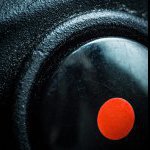
Best bang for buck lighting
gethin reacted to QuickHitRecord for a topic
I personally think that these are hard to beat. I own four of them. I came from running two 575w HMIs but these are brighter, quieter, and more affordable. There's no ballast or extra cabling, which for me is a plus. They also have a dedicated remote control available so you don't have to rely on an app. The only "drawback" is that they can't be powered by v-mounts, but I have other lights that can be. I'm very intrigued by the design of the new Molus G300 because I think I could fit two or maybe even three into a single case. But there are several ways in which the Nanlites still beat them.1 point -
Upcoming Insta360 X4 8K, in less than one hour, here?
ac6000cw reacted to eatstoomuchjam for a topic
If you just want footage with no commentary, markr041 who is a user here has a YouTube channel and he tends to try a pretty decent number of the cameras that come out. They're usually decently shot and I don't think I've ever even seen one where he talked about the camera (or even showed his face). 😃1 point -

Best bang for buck lighting
gethin reacted to Tim Sewell for a topic
Sorry to take the thread off-topic, by the way.1 point -
If you're fighting the sun then yeah, serious horsepower definitely comes into the equation!1 point
-
Best bang for buck lighting
gethin reacted to zerocool22 for a topic
Well kinda disagree on this one. For me its about the look I can create with the lights, and during daytime I am allways fighting the sun. And 300w led lights for example dont allow much creative looks. Were playing with iso's you are just lowering or increasing exposure as is and not affecting the look in a dramatic way. Like popping the subject from the background. Not sure if you ever do flash photography, but I absolutely love the fact I can completely change the look of an image in bright sun with an flash. But yeah I dont like to deal with huge ass lights either an an one man band.1 point -
The 300w leds are great to have, of which I've used only the Aperture fixtures though. The 600D has a big footprint. Rather use a 2.5K HMI instead. But of course the Aperture is much lighter to rig and much less power draw and easily powered by regular circuits. Anyhow, 300w spot leds would be it on the top spots of the list. I also like the 100w amarans. Lightmats and tubes are super neat and easy to use. The amarans come in stronger versions now too. Havent tested them but seem to be great bang for the buck regarding light quality and usuability.1 point
-

Best bang for buck lighting
gethin reacted to Tim Sewell for a topic
With reflectors on it's definitely around 2-3 stops brighter than my Godox SL200.1 point -
Best bang for buck lighting
gethin reacted to ade towell for a topic
Take a look at Amaran and Smallrig1 point -
I'm really a nob in this. But for VR 360 you are right, you need ambisonics, as your head may turn 180° the audio would come from the opposite side confusing you a lot, many VR players support some sort of ambisonics audio so they can move the audio following your head. From my limited research and understanding there are multiple standards so you may end up doing different edit+metadata for Youtube VR than for local players Meta Quest TV , Skybox etc.... Apple Vision Pro? Also I think Resolve 19 now support ambisonics but not sure if you can do all in there, for sure not metadata injection. Now for VR180° your head my turn max 45° as more than that half of your video will be black so it seems that you can get away with binaural or even stereo. I would prefer a stereo mic like the Sennheiser 440 or Rode Stereo Mic as they are not as tall as the H3 so I can use it on a gimbal.1 point
-
I understand that a person can look at a larger quantity of footage and notice similarities and themes, but there are still a great number of un-accounted-for variables that can always bite you in the ass if you were to actually get that camera. The general look that cameras have online is likely to be the default look, partly because most people don't know the first thing about colour grading and mostly because the people who are posting videos and specifying the model number of the camera are likely in the shallow end of the skills pool, so to speak. The exception is cinematographers doing camera tests, but these have their own issues. The challenge comes in when you try and change the image in post. Try to add a bit more contrast and you might find that the image doesn't keep the things you liked about the look. In fact, the nicer the image looks SOOC or with the default LUT on it, the more fragile the image might be because the more pushed it will be. The most flexible images are the most neutral, and our brain doesn't like neutral images, it wants ones with the right herbs and spices already added. There really is no substitute for actually shooting with the camera the way that you shoot, in the situations you shoot in, and then grade it the way you grade it, trying to get the look you want, with your level of skill. TBH, most of the videos I see that have the name of the camera in them, that are graded with a "look", actually look pretty awful and amateurish to me. Either this is their lack of skill as colourist to not be able to get the look they wanted, or they did get the look they wanted and the look is just awful, but it's not a promising picture either way. I wonder how many of them are using colour management. If a camera is a 10-bit LOG with decent bitrate then the camera is one CST away from being almost indistinguishable from any other camera. Skin tones are a challenge of course, but when well-shot on capable equipment these are pretty straight-forward. There's a few principles I think are at play here: What I hear from high-level colourists is that if a project is well shot on capable equipment (without a "we'll fix it in post" mindset) then you can get your colour management setup, put a look in place, and 80% of the shots just fall into place. Then the time can be spent refining the overall look, adding a specific look to certain scenes (night scenes, dream sequences, etc), fixing any problem shots, and then you'd do a fine-tune pass on all shots with very minor adjustments. If it's not well shot to get it mostly right in-camera then you're in all sorts of trouble for post. If the client is inexperienced and doesn't know what they want, or they want something that is very different to how they shot the project. It's very easy to see colour grading make big changes (e.g. shooting day for night) or see the amazing VFX work done by Hollywood etc, and assume that anyone with a grading panel and calibrated reference monitor can do anything with any footage. If the client is a diva, or is somehow mentally unbalanced. Film-making is difficult enough to make almost anyone mentally unbalanced by the time they get to post-production and they're sitting with the colourist and every mistake done at any point on the project is becoming clearly visible on the huge TV in their studio. Throwing a fit at this point is perhaps a predictable human reaction! One colourist I heard interviewed said that when they were colour grading rap videos in the 80's they had to tell one client who had about 20 people in the colour grading suite that the strippers, cocaine, and machine guns had to go back into the limo otherwise they wouldn't be able to colour grade the project. Of course, none of this is the fault of the camera. I'd even theorise that the brand of camera might be a predictor of how much the colour grading process was setup to fail - if people shot something on a Sony rather than a Canon you might find they're more likely to be a clueless and self-entitled influencer etc. God help the colourists that are going to face a barrage of projects over the next few years shot on the FX3 where the person thinks the colourist can duplicate The Creator in post for a few thousand dollars! Also, the stronger the look you apply in post, the more those small colour science differences get lost in the wash. It's also worth asking, do you think the colourists on reddit are the ones who are fully-booked with more professional clients who have realistic expectations, or the ones out there dealing with the stressed masses and going online to learn and vent? My experience on the colourist forums is that the most experienced folks burn out from answering the same questions over and over again, and arguing with people who don't want to learn or put in the work, so the people who are there are mostly those early in their journeys. Only you can know this, because what you love will be different to what anyone else loves. But don't ask random strangers online, actually try it.... https://sonycine.com/testfootage/ https://zsyst.com/sony-4k-camera-page/sony-f55-sample-footage-downloadable-samples/ 🙂1 point
-
I had X2, 1 inch 360 and still have One R 360. I did play a bit more with the X4 The good: - 8k is a very visible bump in quality compared to X3 and 1 inch. Still once reframed is not yet at single lens action cam level but is getting closer. Of course, it really depends on how much you zoom in while reframing. It is more detailed and less compression artifacts. Also, in 360 vr the quality bump is very evident. - operations and UI are snappier than previous models (other than stopping the recording that takes a lot, not sure why) - 5.7k at 60 it allows some slow-motion with X3 quality, in previous models the slowmo was just unusable. - one button operation is customizable so you can set the video mode, frame rate, etc... - battery seems to last a lot, even in 8k 30 - App and Studio are great and work as expected. Connecting the camera to the phone is super easy and always works. Why can't Canon copy them? The ok: - lens guards work ok, great way of mounting them, but is not a free lunch, they need to be super clean, and they still create wired flares. I will probably use mine only on really risky situation. But it is good that they are included. - audio seems a tad better - I don't see a big difference in lowlight compared to the 360 1 inch. They are both quite bad but the X4 is not worst imo that is surprising. - single lens mode allows you 4k 60fps but to be honest the quality gain compared to 8k reframed is not big enough, useful if you need 60fps or you don't want to post process. For example, for chest mount I prefer the reframed angle than single lens. - seems to tend to overexpose but you can set the EV so not a big issue. The bad: - no 10bit log - as for all previous models these type of camera scream for sunny bright days. I mostly using them while moving ski, mtb, horses, cars.... and as soon the light is not great stabilization and video quality suffers a lot. So it is a brilliant camera for sunny days only. - is heavier and bigger than the X3 or the One R + 360 module. - the form factor is perfect for selfie stick but not great for helmet mount. - has only a tripod hole, no gopro mount, it should have both. For action, mounting through the tripod hole will make the camera break in case of any impact where normally the gopro mount would give a bit saving the camera. You can use an adapter, but it makes it even taller. - apparently, every time you turn on the camera you need to re-pair the bluetooth mic. Btw why why and why DJI is disabling internal Mic 2 transmitter recording while connected via bluetooth?!? It would be such a clean solution record scratch over bluetooth (no receiver needed) and have the 32bit float on the transmitter. - external audio through receiver + cold shoe mount + usb adapter is a frankenmoster that is really not usable in action environment. All the YT reviver showing this setup as amazing it makes me cry.... Overall is the best 360 camera on the market by far, coming close to single lens action cam quality, below 2k usd. Finally, after years of stagnation, a tangible bump in quality. With the revival of AR/VR they should do a 180 3D model out this.1 point
-
Agree! Been watching hours of footage and notice a personal bias toward canon images - and it seems to be the way they render color and skin regardless of user - it’s over hours of footage. That’s us! Yes I get this, after feeling a little dejected from the original question and response I checked the subreddit “colorists” and there’s tons of threads and comments noting that they prefer to receive images from some cameras and brands over others. it seems to come down to difficulty - if you have the same face, scene, lighting etc and 5 different cameras or brands - these colorists had noted that to get the desirable look was much easier than others and frustrating and painstaking on others. Which is why I felt it difficult to accept notions of makeup or learn color grading. The tools themselves can aid in that journey. I’ve learned through this that the way canon renders color, specifically skin, is my favorite look. That doesn’t mean I’ll go run out to grab an r5 or r8 - the feature set is far inferior to an a7s3 or a7iv, I think. I was curious what more knowledgeable folks preferred as their starting point tool. Do you use a gx85 for your travel and fs7 for work? Or is it an r5 for travel and fx6 for work, etc? That’s all I was hoping to discuss here and then follow with - “why did you choose that tool”. sometimes we bring our own gripes and biases to a question and don’t answer the quesirtin. that said, now my next question is can you achieve the same appeal of color on mid-level Sony bodies as you can on the canons that produce color I love. And if so, how easy is it to do? Great video - saw this years back I believe. That said. I loved the 1/8 look for general purpose filming but anything more was very stylized for my taste.1 point
-

The China Syndrome (1979): What film camera did Micheal Douglas' character use?
kye reacted to John Matthews for a topic
1 point -
I very much agree with that - the opposite of someone filling an answer with the latest buzzwords, fashion statements and acronyms to gloss over the fact that they don't really understand the subject. I've been interested in science and engineering from quite young (the first book I ever bought was about electricity and magnetism). Favourite subject at secondary school was physics, helped a lot by an enthusiastic teacher who really understood the subject and could explain the fundamentals behind it very well. When I went on to study physics and electronics at university, in marked contrast some of the lecturers were terrible at explaining things in a simple fashion. One lecturer in particular kept pushing his own textbook, which was just as impenetrable as his lectures, so some of us students just gave up and found a book that explained the basics of the subject much better, just to get us through the exam at the end of the year... (and it was a subject that in my subsequent electronic design engineering career I've become much more familiar with - so now I know it's mostly much less complicated than it seemed at the time). "Simplicity is the essence of good design" I've found to be very true. If things start getting too complicated and messy in a project, it's usually a sign that I didn't set off in the right direction at the 'blank sheet of paper' stage.1 point
-
I've heard that the 12K files are very usable in terms of performance, but it will likely depend on what mode you're shooting in. Most people aren't using the 12K at 12K - they're using it at 4K or 8K. Regardless, Resolve has an incredible array of functionality to improve performance and enable real-time editing and even colour correction on lesser hardware. This is a good overview:1 point

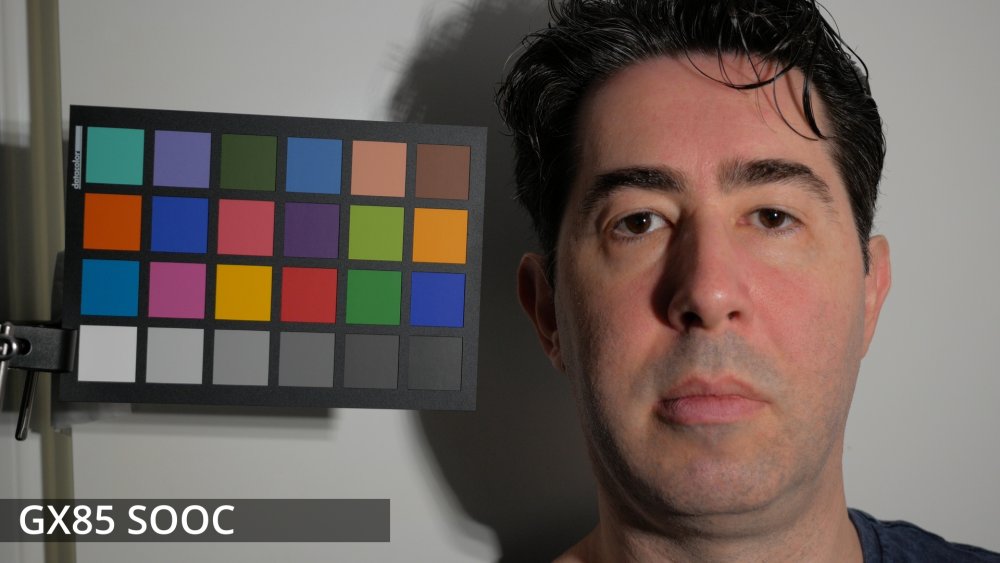
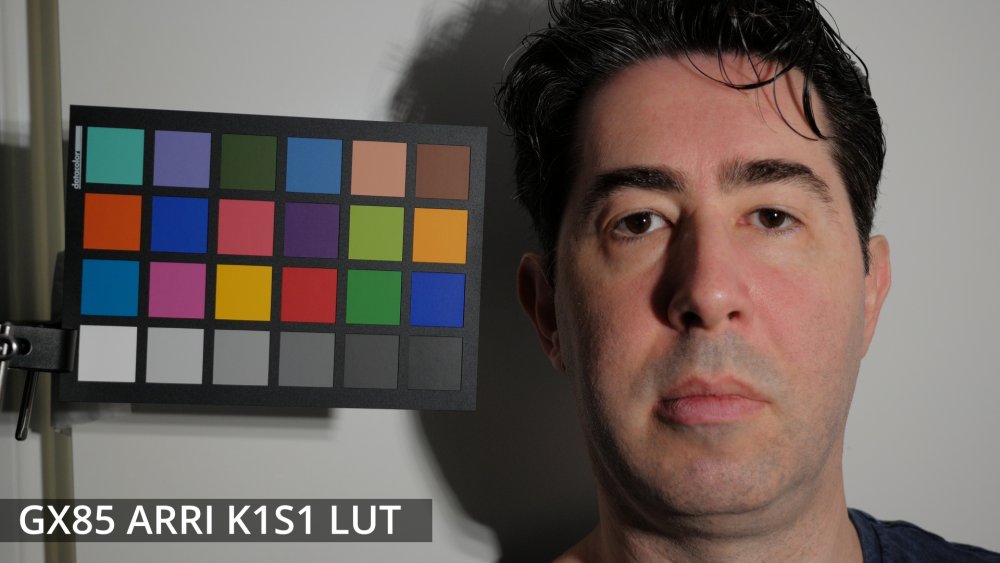
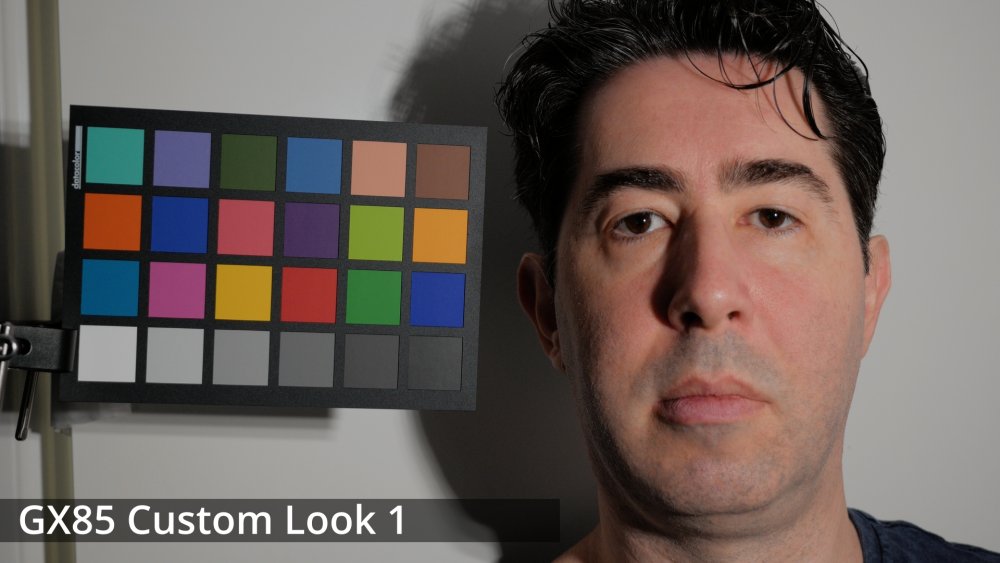
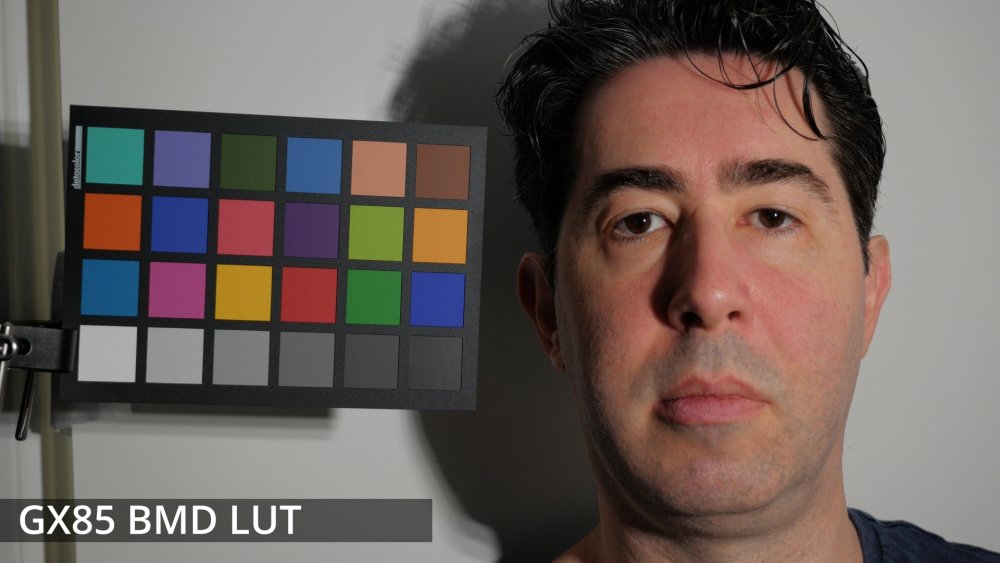
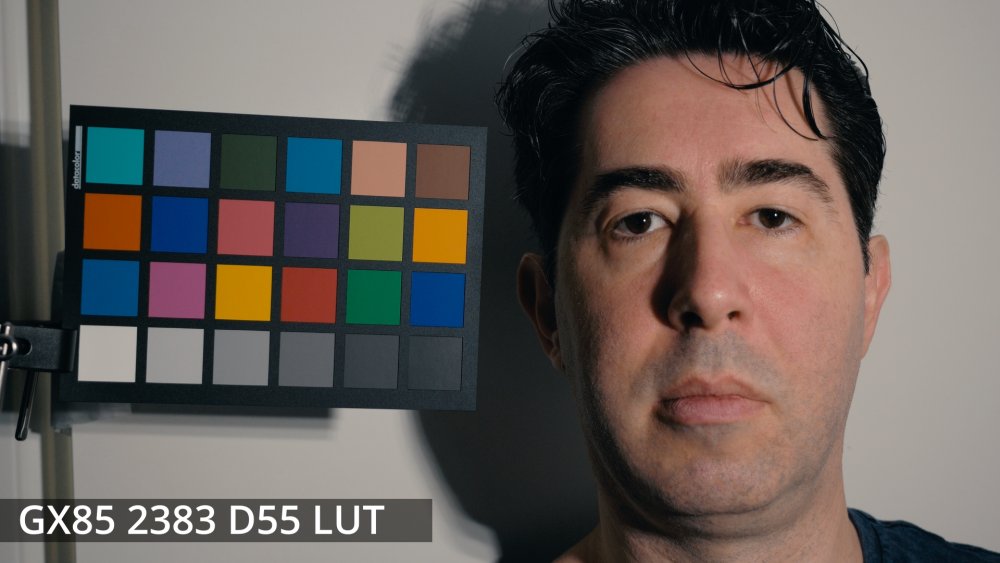
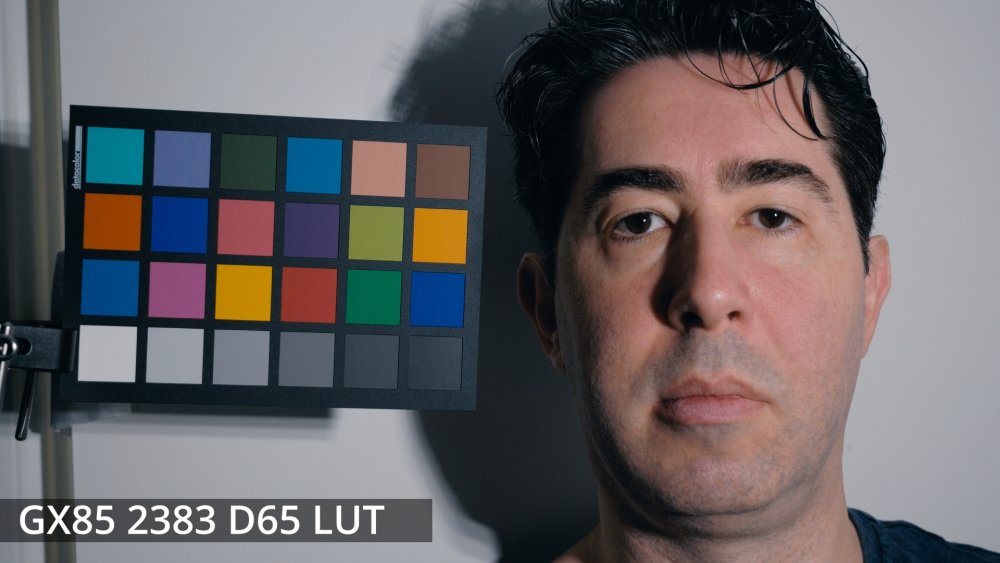
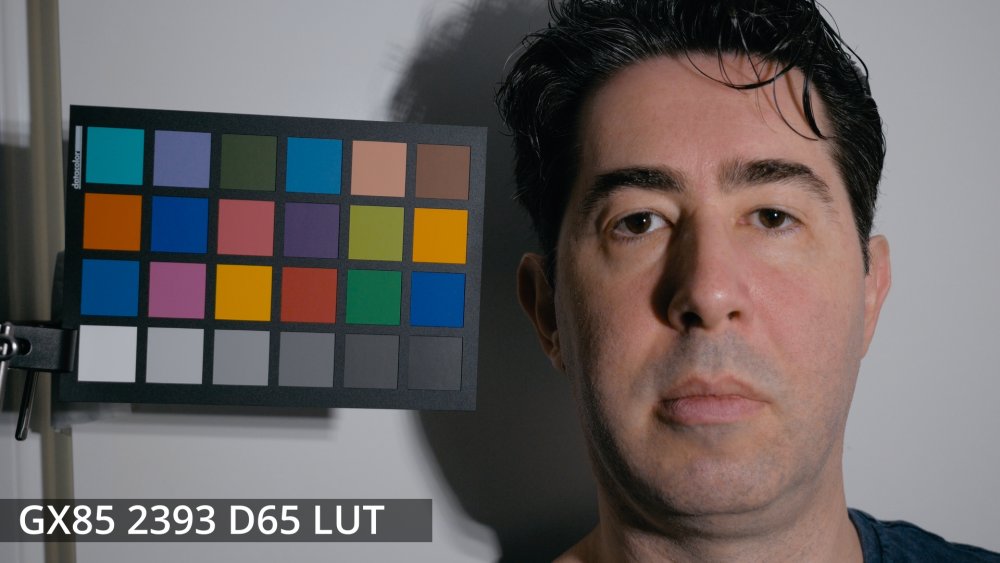
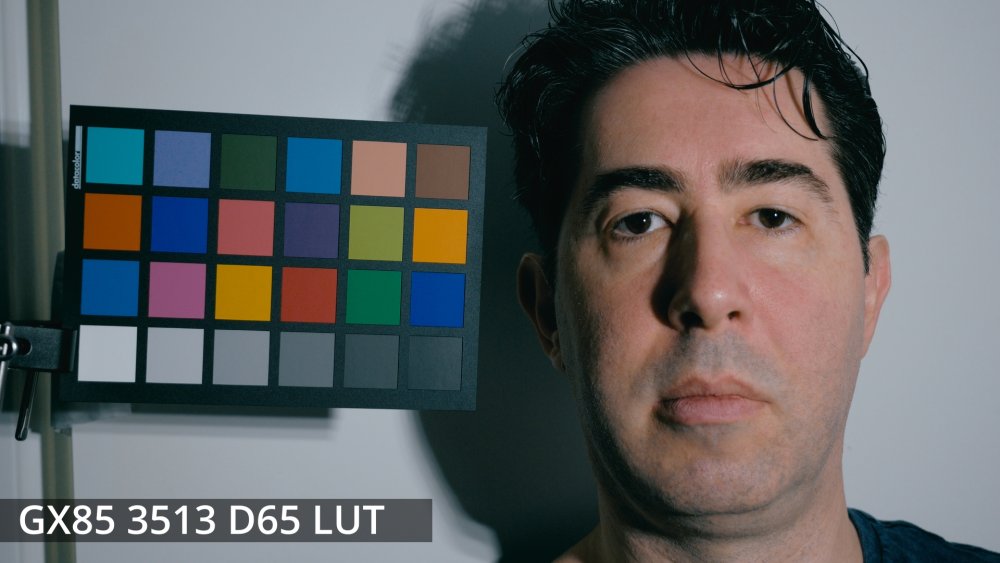
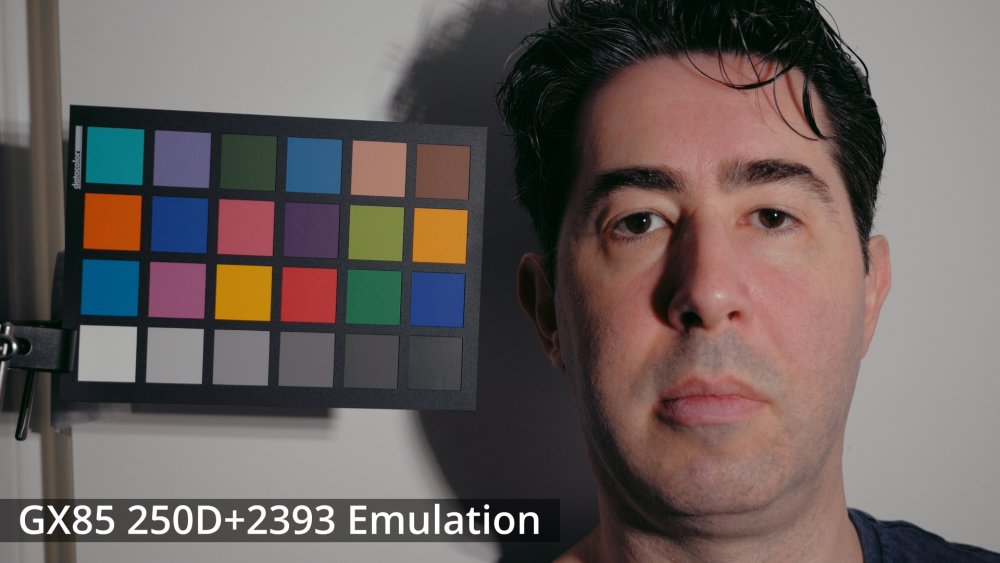

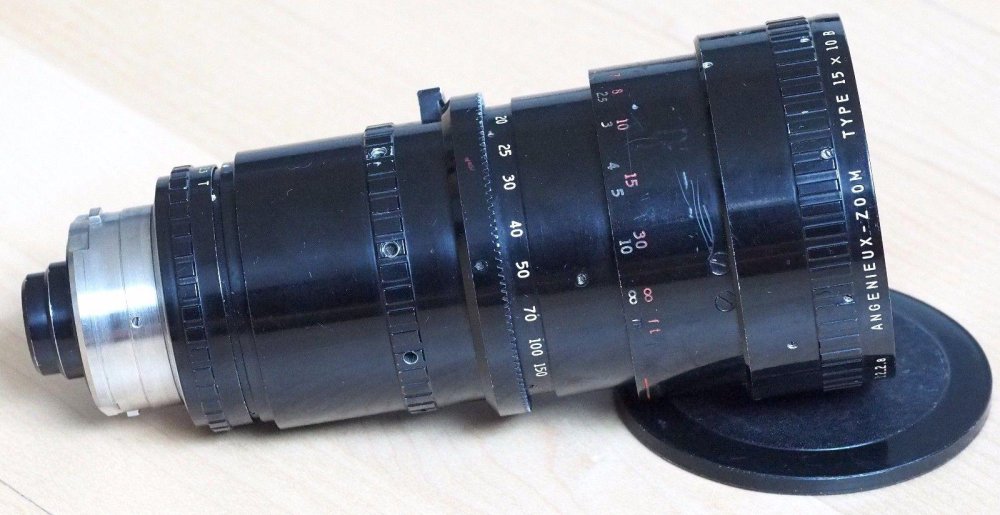
.thumb.jpg.a8ca677cfe50cffb97ed46499566d6f3.jpg)
